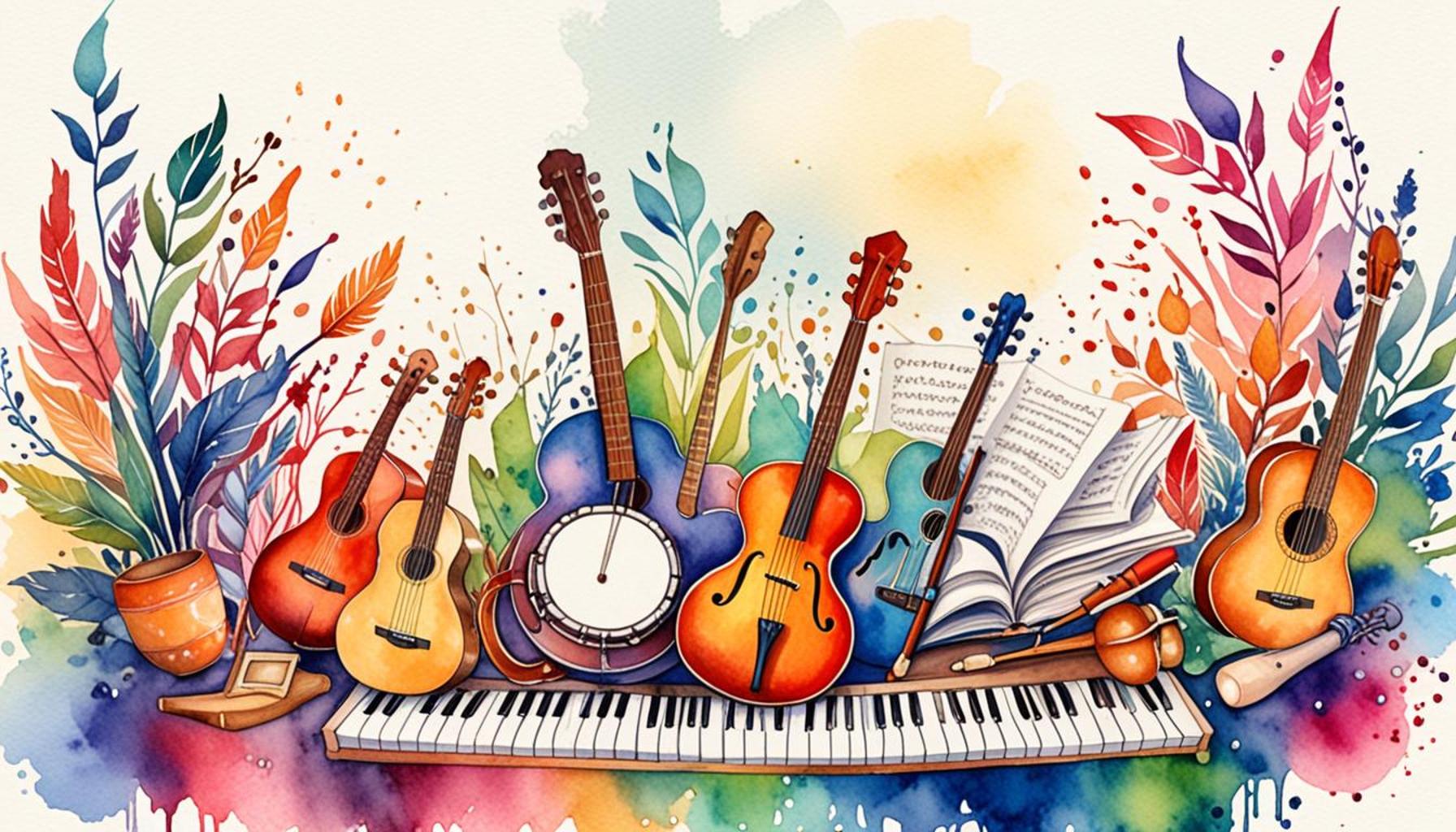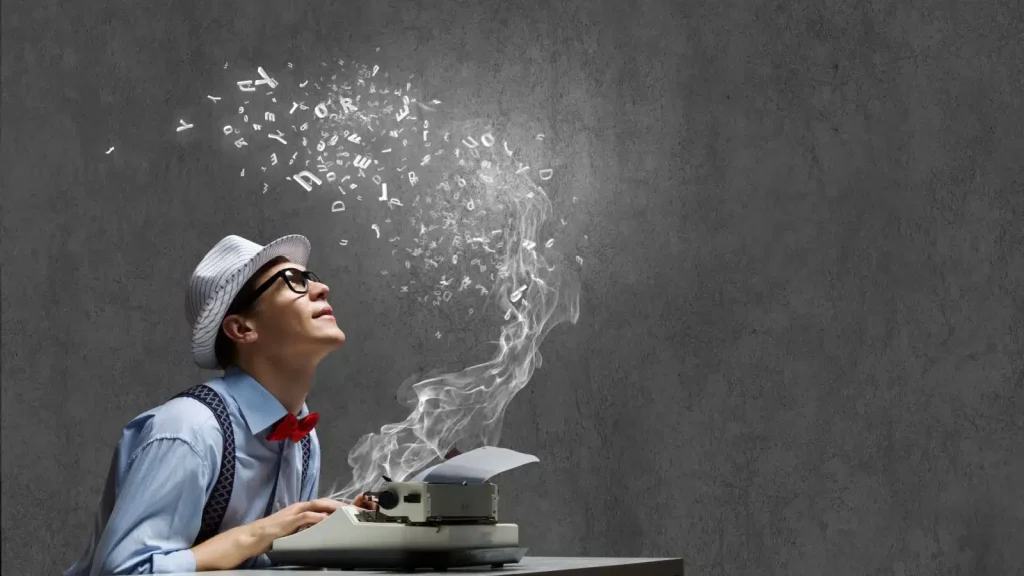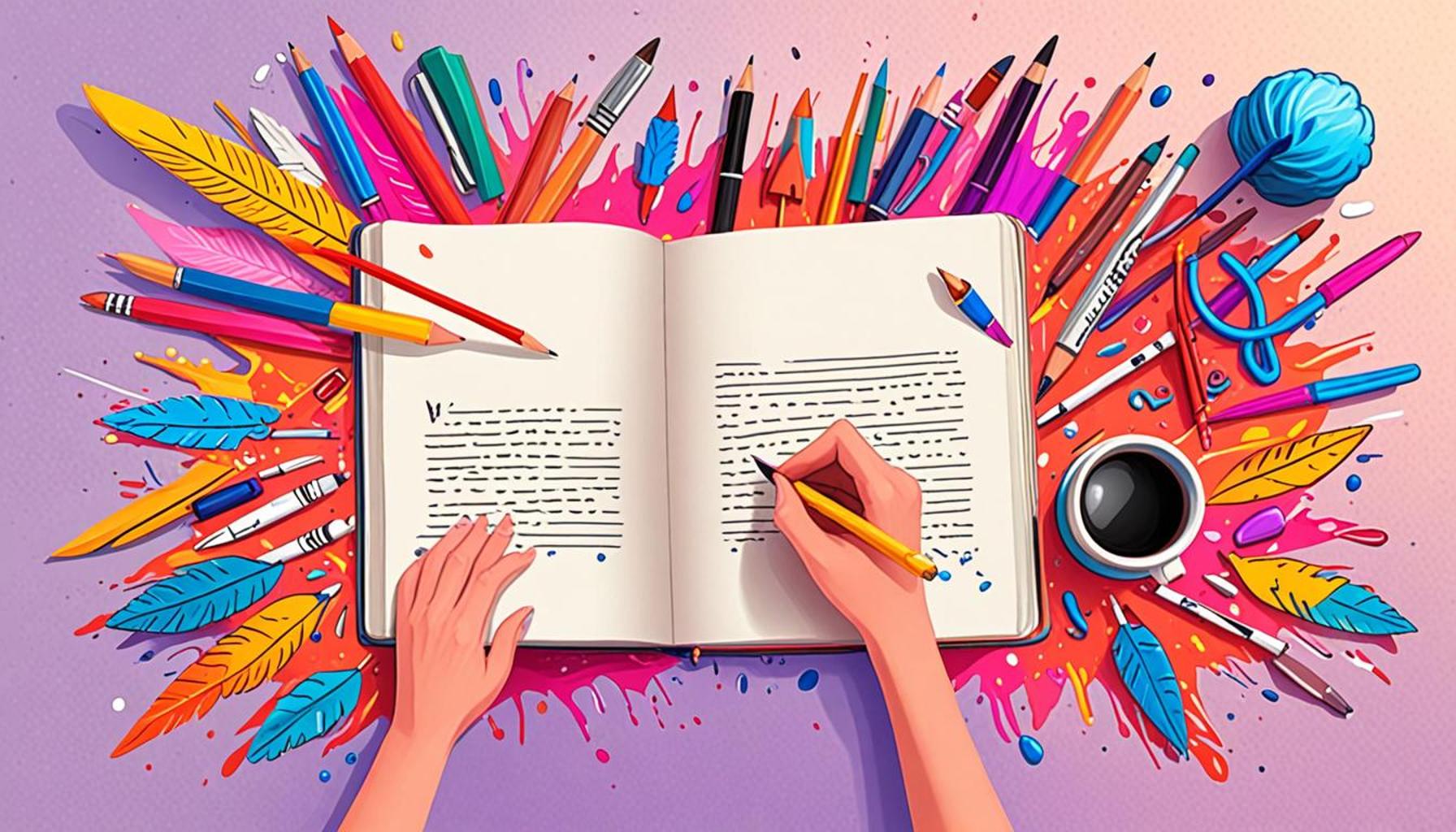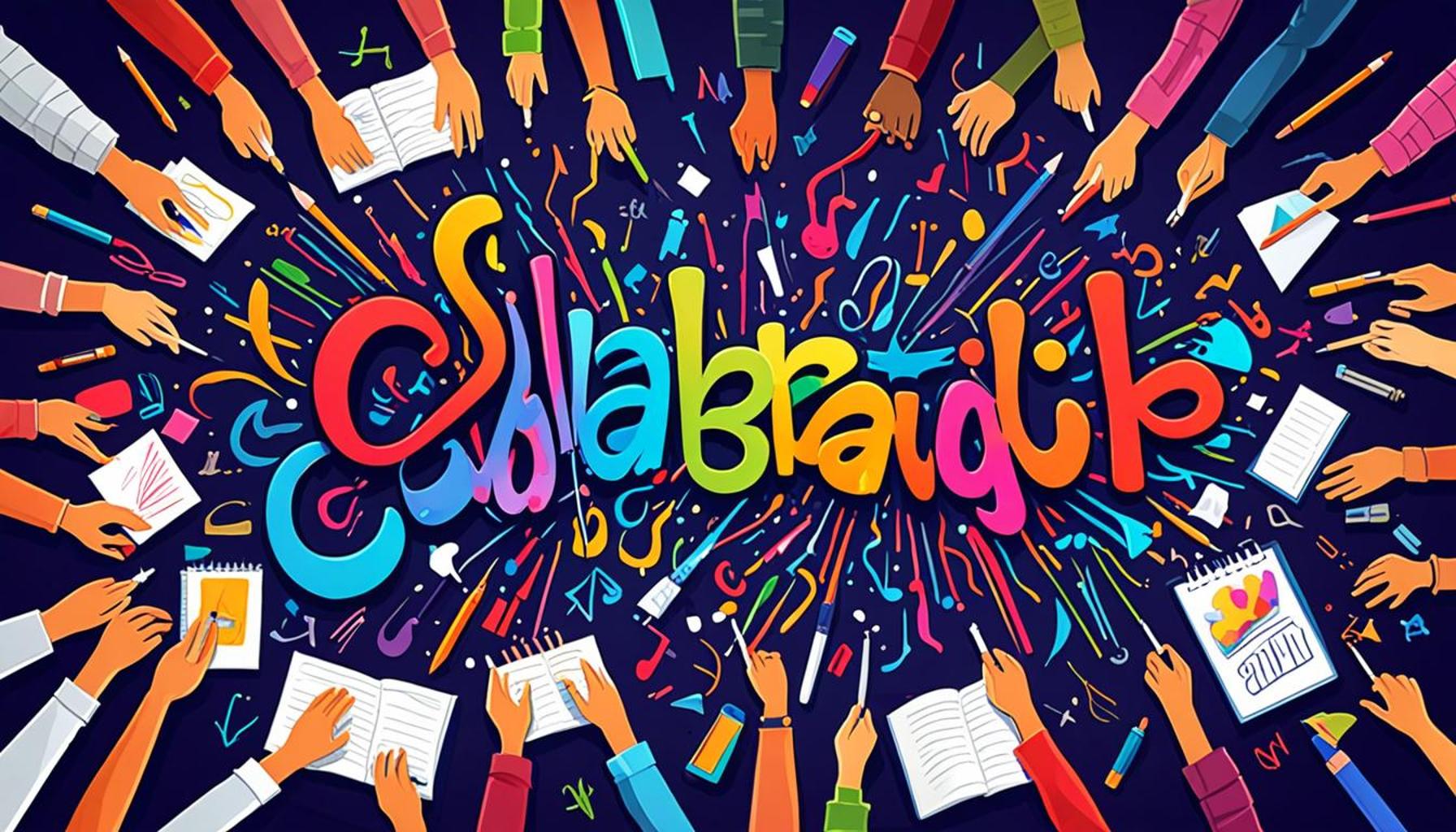Rhythms and Sounds: Incorporating Poetic Elements into Prose

The Allure of Poetic Elements in Written Expression
As readers, we often find ourselves captivated by the musicality of language. When prose dances with poetic elements, it elevates the reading experience to something truly remarkable. Poetic language, with its intricate tapestries of rhythm and sound, deepens our understanding, evokes emotion, and instills a lasting memory. This fusion is not just an artistic choice; it is a powerful tool that can shape the narrative in profound ways.
Incorporating rhythms and sounds into prose invites a unique blend of creativity and emotion. This approach offers writers the ability to:
- Enhance Imagery: By using descriptive language that resonates with the senses, writers create vivid pictures in the minds of their readers. For instance, instead of simply saying “the sky was blue,” a writer might say, “the sky stretched like a vast canvas brushed with cerulean hues,” which paints a more evocative picture while also pleasing the ear.
- Engage Emotion: Sound plays a crucial role in stirring feelings. The soft, whispering sibilance in a line can evoke tenderness, while sharp, staccato rhythms might provoke urgency. Think of Chimamanda Ngozi Adichie’s use of evocative sound patterns in her novels that often weave in the rhythms of Nigerian storytelling.
- Build Flow: Crafting sentences that have a natural, musical quality can enhance readability and engagement. Consider the flowing prose that mimics the ebb and flow of water, drawing the reader into a narrative that feels almost lyrical.
In Nigeria, where oral traditions infuse our storytelling, blending prose and poetry becomes even more poignant. The use of metaphor, alliteration, and local dialects can richly enhance narratives, reflecting our diverse cultures. For example, the use of proverbs in storytelling is a hallmark of Nigerian literature, where a simple phrase can encapsulate profound wisdom while also maintaining a rhythmic resonance that makes it memorable.
Join us on this exploration of how to fuse poetic elements into prose, transforming ordinary narratives into extraordinary experiences. Through an examination of works that exemplify this blend, such as the writings of Wole Soyinka or Buchi Emecheta, we will uncover techniques, examples, and exercises designed to unleash the inherent musicality present in every piece of writing. By embracing these elements, writers can not only enhance their craft but also contribute to the vibrant tapestry of Nigerian literature and storytelling.
SEE ALSO: Click here to read another article

The Symphony of Language in Prose
To understand the profound impact of rhythms and sounds in prose, it is crucial to examine their foundational role in heightening the storytelling experience. Literary figures often liken language to music, where cadence and timbre play pivotal parts in how a narrative unfolds. By harnessing the power of poetic elements, writers can unlock layers of meaning and emotion that resonate deeply with readers.
Imagery serves as one of the primary conduits through which these elements flow. Through nuanced descriptions, a writer can craft scenes that not only capture the visual essence of a moment but also invite readers to feel the ambiance. When crafting a scene set in a bustling Lagos market, for example, rather than stating “the market was crowded,” one might evoke the experience with, “the market throbbed like a living organism, its heartbeats defined by a cacophony of voices and the intoxicating scent of spices weaving through the humid air.” Such descriptions use alliteration and rhythm to create a sensory immersion, allowing readers to not only visualize but also hear and smell the scene. This technique draws on the rich tradition of oral storytelling, where sensory details enhance the audience’s connection to the narrative.
Moreover, sound functions as a powerful emotional trigger in prose. In literature, the choice of words can establish tone, mood, and pace. Consider a sentence filled with sharp, clipped sounds, such as “The tires screamed against the pavement,” versus a mellifluous phrase, “The tires glided silently over the moist asphalt.” The former conveys urgency and tension, while the latter suggests calm and beauty. Writers often utilize these techniques to mirror the emotional landscape of their characters or to foreshadow events, subtly influencing how a reader feels as they engage with the narrative.
Additionally, rhythm in writing, akin to a heartbeat, allows the reader to engage with the material on a more profound level. A writer may employ varied sentence lengths to create a unique flow that mirrors the content of what is being conveyed. Short, abrupt sentences can incite a sense of chaos or urgency, while longer, flowing sentences might evoke a feeling of peace or contemplation. This dynamic interplay of rhythms can transform a simple narrative into a symphony, captivating readers and drawing them deeper into the literary experience.
- Use of Repetition: Echoing phrases or sounds can reinforce themes and emotions, akin to the refrains found in poetry. This creates a sense of unity in the narrative.
- Vivid Adjectives: Employing descriptive language enhances sensory engagement. Descriptive adjectives help readers visualize scenes and feel emotions more profoundly.
- Pacing with Punctuation: Strategic use of punctuation can manipulate the rhythm of the prose, with dashes and ellipses prompting pauses that heighten tension or create suspense.
As we continue to explore the integration of poetic elements into prose, we will uncover the techniques used by renowned writers. Their ability to weave sound and rhythm into the fabric of their narratives exemplifies the beauty of this fusion. Authors from Nigeria, such as Chinua Achebe, have integrated these elements seamlessly into their works, reflecting the rich tapestry of culture and tradition in African storytelling. This journey into the harmony of prose promises to deepen our appreciation for language and its limitless possibilities.
Building on the concept of rhythms and sounds in writing, it’s crucial to recognize the impact these elements can have on prose. By infusing poetic devices such as alliteration, assonance, and meter into narrative forms, writers can create a more immersive reading experience. This approach not only enhances the aesthetic quality of the writing but also engages the reader’s senses, making the text resonate on multiple levels.
For instance, when authors strategically use alliteration, they can draw attention to specific phrases that convey emotion or set the tone. Consider the difference between a plain description and one filled with rhythmic language: “The gentle breeze whispered through the willows,” versus “The breeze moved through the trees.” The former creates a more vivid picture and evokes feelings, transforming the reading experience.
Moreover, the incorporation of poetic rhythms into prose can help to establish a unique voice for the narrative. A writer may choose a steady cadence for an epic tale, while another may opt for a fragmented style to reflect a character’s psychological state. This stylistic choice not only serves to tell a story but also enhances characters’ emotions and actions, making them more relatable and dynamic for the reader.
Exploring the delicate balance of prose and poetry opens doors to creative possibilities that can deepen narratives and add layers of meaning. Writers looking to experiment with their craft should consider how the strategic implementation of sound and rhythm can shape their storytelling, creating a lingered impact on the audience that echoes beyond the text itself.
| Advantages | Description |
|---|---|
| Enhanced Imagery | Incorporating sounds creates vivid imagery that resonates with readers. |
| Improved Emotional Connection | Rhythmic writing helps convey emotions more compellingly, allowing deeper reader engagement. |
LEARN MORE: This related article may interest you
The Dance of Words: Mastering Poetic Devices in Prose
The deliberate incorporation of poetic devices in prose forms a dance of words that captivates readers and enriches the narrative. Elements such as metaphor and simile lay the groundwork for deeper connections, allowing writers to create bridges between the familiar and the unknown. In Nigerian literature, for example, Wole Soyinka’s use of metaphor draws readers into the intricate relationships between culture and identity, often illustrating societal truths within vivid imagery. When a writer describes a character’s resilience as being “like the baobab tree, steadfast against the storm,” it evokes a powerful relationship between nature and human spirit that resonates universally, enhancing the emotional depth of the story.
Sound devices such as assonance, consonance, and onomatopoeia contribute significantly to the auditory experience of prose. Consider the use of assonance in a sentence: “The cool, blue pool glistened under the pale moon.” The repetition of vowel sounds creates a soothing rhythm, appealing to the reader’s auditory senses. More dynamically, onomatopoeic words such as “buzz,” “sizzle,” or “crash” stimulate the reader’s imagination, transporting them into the heart of the narrative. An author might write, “The thunder crashed overhead, a warning of the storm’s impending fury,” encapsulating not just a visual moment but an auditory one that heightens tension and anticipation.
Another vital tool in the writer’s arsenal is synecdoche and metonymy, both of which lend a unique flair to prose by employing parts to symbolize wholes or using a closely related term to represent an idea. These devices often provide a cultural context that can resonate deeply with Nigerian readers. For example, referencing “the crown” to signify royal authority in the Nigerian context not only speaks to tradition but also evokes a sense of respect and power associated with leadership. Crafting sentences where such devices are woven into the narrative can elevate the prose, capturing nuances that evoke thought and reflection.
- Layered Meanings: The use of double meanings in phrases can invite readers to explore themes from various angles, enriching their reading experience.
- Alliteration: The repetition of consonant sounds at the beginning of words can create memorable phrases and enhance the lyrical quality, making the text more enjoyable.
- Imagistic Comparisons: Drawing comparisons with lively imagery can deepen the reader’s emotional engagement, making themes of love, loss, or triumph more impactful.
The rhythmic structure of prose can be likened to a pulse, echoing the ebb and flow of human experience. Writers can manipulate these elements to reflect the emotional states of their characters or to underscore pivotal moments in the story. The creative use of dialogue, for instance, can vary in rhythm; characters might speak in short, quick exchanges when agitated or fluidly during intimate conversations. This variability enriches the narrative, allowing readers to become immersed in the dialogue and feel the weight of each exchange.
As we delve further into the symbiotic relationship between poetic and prose elements, we uncover the timeless techniques utilized by writers who seamlessly blend art with storytelling. Authors like Chimamanda Ngozi Adichie not only tell compelling stories but also echo the rhythms and sounds of language in their prose, drawing readers into a deeply cultural and emotional tapestry. Exploring these elements allows writers and readers alike to appreciate the intricate dance of words, where prose transforms into a melody that lingers long after the final page is turned.
RECOMMENDED: Check out this similar article
Final Thoughts on the Harmonious Blend of Prose and Poetry
In conclusion, the interplay between poetic elements and prose serves as a vital tool for writers aiming to deepen their narrative’s emotional resonance. By skillfully weaving metaphors, sound devices, and cultural references into storytelling, authors can create vivid landscapes that mirror the complexities of human experience. This dynamic fusion invites readers to not only engage with the story on a surface level but also to uncover underlying themes and connections that enrich their understanding.
As we examine the works of notable Nigerian authors like Chimamanda Ngozi Adichie and Wole Soyinka, we see how the rhythmic quality of language can evoke powerful imagery and emotional responses. These masters of prose illustrate that the cadence of words can echo the pulse of life itself, allowing readers to feel each moment with intensity. The incorporation of elements such as layered meanings and imagistic comparisons not only enhances the narrative but also sparks curiosity and reflection in the audience.
Thus, for aspiring writers, understanding and utilizing these poetic devices can provide a pathway to elevate their prose, fostering a connection with readers that transcends mere storytelling. As you write, consider how rhythm and sound can transform your words into a melody, resonating in the hearts and minds of your audience long after the last page is turned. By embracing the artistry of prose intertwined with poetry, you not only enrich your craft but also contribute to a vibrant literary tradition that celebrates the power of language.



